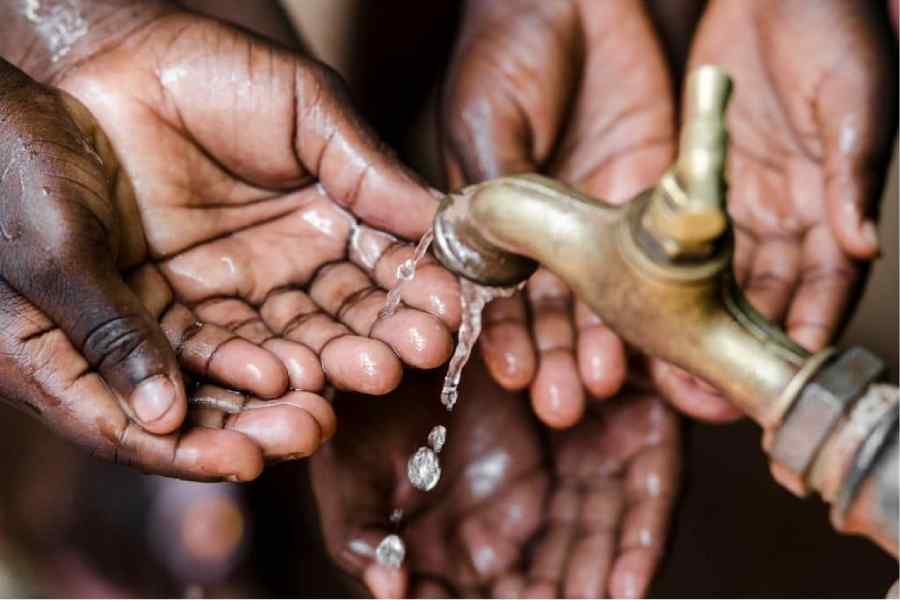With scorching heat battering a large swathes of India over the past few weeks, water available in the 150 main reservoirs across the country further dipped to just 21 per cent of their total live storage capacity.
The Central Water Commission (CWC) has released the live storage status of 150 key reservoirs across India in its latest bulletin.
These reservoirs, crucial for hydroelectric projects and water supply, have a combined live storage capacity of 178.784 billion cubic meters (BCM), which is approximately 69.35 per cent of the total live storage capacity created in the country.
As of Thursday, the live storage available in these reservoirs is 37.662 BCM, which is 21 per cent of their total capacity. Overall, the live storage available across the 150 reservoirs stands at 54.310 BCM against the estimated total capacity of 257.812 BCM.
This marks a significant decrease from the same period last year, when the live storage was 46.883 BCM.
The current storage is also lower than the 10-year average (normal) storage of 41.446 BCM. Thus, the present storage is 80 per cent of last year's levels and 91 per cent of the normal storage for this period.
For the past two weeks, the reservoirs were at 22 per cent while it was 23 per cent the week before that.
Swathes of northern and eastern India remained in the grip of a punishingly long heat wave, causing water stress in parts of the country including in the national capital.
In terms of reservoir capacity, the southern region continues to be most hit.
States like Andhra Pradesh, Telangana, Karnataka, Kerala, and Tamil Nadu, with 42 reservoirs, have a total capacity of 53.334 BCM. The available storage is 8.508 BCM (16 per cent of capacity), which is lower than last year's 21 per cent and the normal storage of 20 per cent.
Northern states including Himachal Pradesh, Punjab, and Rajasthan, have 10 monitored reservoirs with a total capacity of 19.663 BCM. The current live storage is 5.488 BCM (28 per cent of capacity), which is lower than last year's 39 per cent and the normal storage of 31 per cent.
The eastern region covering Assam, Jharkhand, Odisha, West Bengal, Tripura, Nagaland, and Bihar has 23 reservoirs with a total capacity of 20.430 BCM. The available storage is 3.873 BCM (19 per cent of capacity), slightly better than last year's 18 per cent but below the normal storage of 23 per cent.
In the western region, Gujarat and Maharashtra, with 49 reservoirs, have a total capacity of 37.130 BCM.
The current storage is 7.608 BCM (20.49 per cent of capacity), which is less than last year's 24 per cent but better than the normal storage of 19.56 per cent.
In the central region that includes Uttar Pradesh, Uttarakhand, Madhya Pradesh, and Chhattisgarh, there are 26 reservoirs with a total capacity of 48.227 BCM. The current live storage is 12.185 BCM (25 per cent of capacity), which is less than last year's 32 per cent and the normal storage of 26 per cent.
The overall storage position in the country is less than that of the corresponding period last year and is also below the normal storage for this time of year.
Specifically, better-than-normal storage is observed in river basins of the Ganga, Brahmaputra, Sabarmati, Narmada, Tapi, and a few others, while significant deficiencies are noted in the Brahmani and Baitarni, Krishna, Mahanadi, Godavari, and Cauvery basins, among others.
Out of the monitored reservoirs, 59 have more storage than last year, and 58 have more-than-normal storage.
However, 16 reservoirs have storage levels less than or equal to 20 per cent of last year’s levels, and 11 have less than or equal to 20 per cent of normal storage.
Notably, states such as Assam, Jharkhand, Tripura, Bihar, Uttarakhand, Karnataka, and Kerala have better storage compared to last year, while states like Himachal Pradesh, Punjab, Madhya Pradesh, Rajasthan, Maharashtra, Uttar Pradesh, Chhattisgarh, Telangana, Andhra Pradesh, and Tamil Nadu show lower storage levels.
Except for the headline, this story has not been edited by The Telegraph Online staff and has been published from a syndicated feed.











